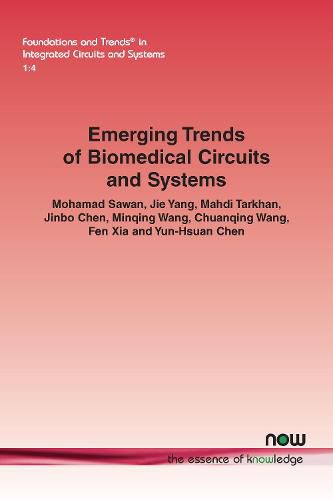Readings Newsletter
Become a Readings Member to make your shopping experience even easier.
Sign in or sign up for free!
You’re not far away from qualifying for FREE standard shipping within Australia
You’ve qualified for FREE standard shipping within Australia
The cart is loading…






This title is printed to order. This book may have been self-published. If so, we cannot guarantee the quality of the content. In the main most books will have gone through the editing process however some may not. We therefore suggest that you be aware of this before ordering this book. If in doubt check either the author or publisher’s details as we are unable to accept any returns unless they are faulty. Please contact us if you have any questions.
Science and engineering disciplines are provoking fundamental and applied discoveries in numerous applications, such as to deeply understand brain functions, precisely diagnose diseases, and to then properly address these. The later advances call upon biomedical integrated circuits and systems (BioCAS) to provide needed research tools. In fact, with the increase of the personalized healthcare market and BioCAS featuring wearability, implantability and intelligence, it has become significantly more important to address these emerging trends. These circuits and systems deal with various signals and images such as electrophysiological, electrochemical, optical, and magnetic, which require various front-end circuits to acquire signals and usually cancel out the noise. With the booming artificial intelligence methods, these biosignals became mandatory for the monitoring, detection, diagnosis and even prediction of diseases for example.This monograph focusses on the current research activities and emerging trends that relate to the above-mentioned functionalities, and it should be of interest to students, researchers and engineers active in the fields related to Circuits and Systems for Biomedical Engineering.
Section I is a summary of the main BioCAS research interests, and in Section II various biosignal acquisition circuits techniques are discussed. In Section III the authors cover circuits for biosignal processing, with emphasis on the newly emerging artificial intelligence. Sections IV and V contain a review of wireless power harvesting and communication circuits. Sections VI and VII represent circuits that help miniaturizing biomedical imaging systems, and other systems intended for the detection of chemical and molecular assays. Section VIII describes one of the main neural prostheses intended to address vision disorders, whilst the last section reviews electrode-tissue interfaces that essentially bridge the circuits and systems with the human body.
$9.00 standard shipping within Australia
FREE standard shipping within Australia for orders over $100.00
Express & International shipping calculated at checkout
This title is printed to order. This book may have been self-published. If so, we cannot guarantee the quality of the content. In the main most books will have gone through the editing process however some may not. We therefore suggest that you be aware of this before ordering this book. If in doubt check either the author or publisher’s details as we are unable to accept any returns unless they are faulty. Please contact us if you have any questions.
Science and engineering disciplines are provoking fundamental and applied discoveries in numerous applications, such as to deeply understand brain functions, precisely diagnose diseases, and to then properly address these. The later advances call upon biomedical integrated circuits and systems (BioCAS) to provide needed research tools. In fact, with the increase of the personalized healthcare market and BioCAS featuring wearability, implantability and intelligence, it has become significantly more important to address these emerging trends. These circuits and systems deal with various signals and images such as electrophysiological, electrochemical, optical, and magnetic, which require various front-end circuits to acquire signals and usually cancel out the noise. With the booming artificial intelligence methods, these biosignals became mandatory for the monitoring, detection, diagnosis and even prediction of diseases for example.This monograph focusses on the current research activities and emerging trends that relate to the above-mentioned functionalities, and it should be of interest to students, researchers and engineers active in the fields related to Circuits and Systems for Biomedical Engineering.
Section I is a summary of the main BioCAS research interests, and in Section II various biosignal acquisition circuits techniques are discussed. In Section III the authors cover circuits for biosignal processing, with emphasis on the newly emerging artificial intelligence. Sections IV and V contain a review of wireless power harvesting and communication circuits. Sections VI and VII represent circuits that help miniaturizing biomedical imaging systems, and other systems intended for the detection of chemical and molecular assays. Section VIII describes one of the main neural prostheses intended to address vision disorders, whilst the last section reviews electrode-tissue interfaces that essentially bridge the circuits and systems with the human body.